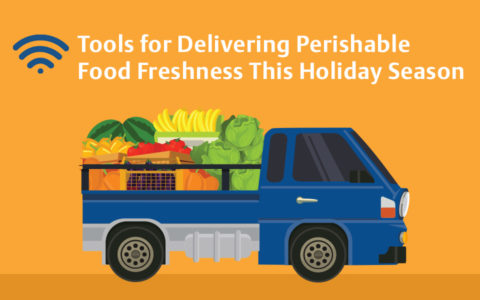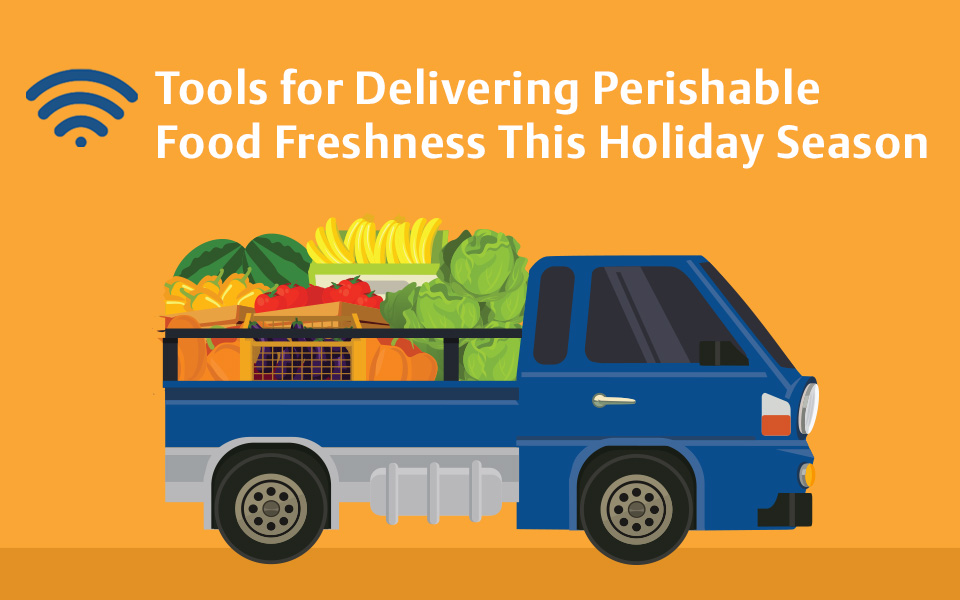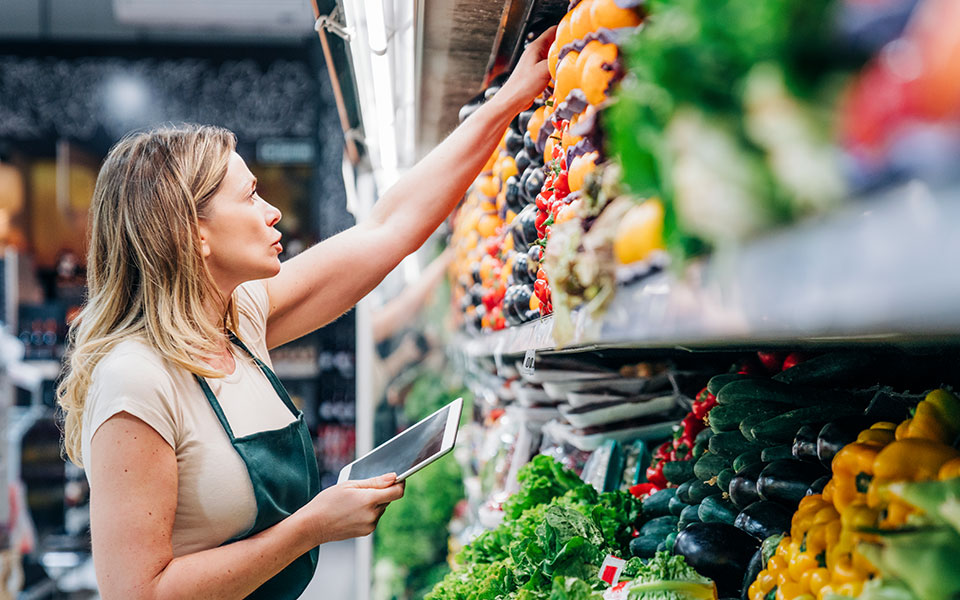Tools for delivering perishable food freshness this holiday season

*On June 1, 2023 Emerson’s Climate Technologies business became a new standalone company – Copeland. Though our name has changed, we are building on more than a century of HVACR innovation and industry leadership, and Copeland continues to offer the same products, industry stewardship, and learning opportunities you’ve grown to trust. Information found on this webpage posted before June 1, 2023 may contain our old name or branding, but you can be at ease knowing it was created with the knowledge and expertise of Copeland.
More than any time of year, food is a central attraction of the holiday season. Sharing, preparing and shopping for fresh, seasonal offerings are big parts of what make the holidays so special. For perishable food producers and suppliers, getting their food onto shelves, into restaurants and served up on holiday dinner tables — while maintaining maximum food quality and safety — are top priorities. These goals can be especially challenging to achieve during a holiday season when supply and demand issues persist. Doing so means having the visibility and insights into every aspect of their cold chain network — both historically and in real time.

High volume meets seasonal supply challenges
The timeframe leading into Thanksgiving and going through the New Year is historically a period when higher volumes of perishable foods are sold in supermarket and restaurants. For growers of fresh produce and suppliers of holiday protein staples like turkey and ham, it can be a particularly challenging season to maintain product quality and ensure food safety for their customers.
The holidays always present timing issues for the industry’s major lettuce and vegetable growers, as they deal with the impacts of transitioning their growing operations from Salinas, Calif., to Yuma, Ariz. In the fall, as the growing season ends in Salinas, producers pack up their entire operations and move them to Yuma for the winter. This can cause gaps in supply during times of increased demand, and this year has been no exception.
In Yuma, this year’s fall growing season has been unseasonably cold, slowing the growth of fresh produce crops and delaying typical harvest timelines. Berry producers in Southern California have been deluged with excessive rains, negatively impacting crop quality while making it more difficult to harvest in muddy fields. In Yuma and Salinas, which is known as the “salad bowl of the world,” this year’s lettuce crops have been plagued with disease. This has caused a national lettuce shortage that will significantly drive up the costs of fresh greens this holiday season — up to three times higher than just months ago.
Market prices of the traditional holiday turkey are rising as well, due to persistent supply chain cost increases and the impacts of a poultry industry hit hard by the avian flu. Recent data estimates that the disease contributed to the culling of 50 million birds from Maine to Oregon, including a significant share of table-bound poultry. Of course, the combination of dwindling supplies and increased holiday demand is expected to drive up poultry prices to record highs and place added pressures on growers and suppliers.
These difficult market conditions have left little room for error in cold chain management and shipping operations. Producers must protect the quality and safety of their limited supplies, and recoup as much profit as possible.
Blocking, tackling and cargo tracking
For perishable providers seeking to build a solid foundation for cold chain integrity, this starts with establishing cargo tracking and monitoring capabilities. Copeland’s GO real-time 4G/5G trackers, when combined with the Oversight Cargo Services software portal, is designed to give producers live visibility to in-transit shipments. In addition to providing real-time shipper location, these devices are available in a variety of models with sensors that enable visibility to temperature, relative humidity, light and location across a range of travel durations (e.g., 20, 60 or 90 days).
Oversight software consolidates shipping data into one centralized view to give quality assurance (QA) and logistics teams the ability to identify when temperatures deviate from setpoint on any shipment. Real-time notifications and alerts enable teams to immediately respond to temperature excursions, contact carriers, and facilitate resolutions — before these issues can impact food quality and safety.
Location tracking enables teams to better manage deliveries and meet promised estimated time of arrival (ETA) schedules. Then, upon arrival at customer distribution centers (DCs) or retail stores, trip data can be used to provide proof of holding temperatures and help to resolve disputes at receiving docks.
Historic insights deliver a longer view
Another key advantage of Oversight software is its deep and robust data analytics capabilities. During the end-of-year crunch, perishable suppliers can use these tools to extract the insights needed to help them make critical decisions throughout the holiday season. Leveraging data from previous years, the software can uncover regional trends, carrier performance issues and quality expectations. Armed with these insights, growers and suppliers can:
- Create carrier scorecards that prioritize using seasonal carriers with a record of reliability
- Identify shipping lanes where temperature excursions seem to occur most frequently
- Provide extra protection to those products that have proven more susceptible to seasonal challenges
- Avoid problematic DCs or facilities that have a history of poor cold chain management
Most importantly, these data insights can help companies to transition from reacting to problems as they occur to preventing them from happening in the first place. As data accumulates — providing an objective record of cold chain temperatures in-transit, carrier performance and product quality trends — Oversight software can deliver more actionable, analytics-driven insights. And in these challenging supply chain conditions, perishable providers need every advantage possible to protect profits and maintain stringent standards for food quality and safety.
To learn how Copeland’s Oversight Cargo Services are helping perishable providers to maximize food quality and safety while unlocking deeper cold chain management insights, please visit our website.

8 proven strategies for rigorous cold chain management
by Dan Knauer | Cold Chain
Preparing for the approval and safe use of A2Ls in commercial refrigeration applications...
Protection for high-value shipments just got even better
by Alex Axelsson | Cold Chain, Transportation
We’re excited to announce the release of Copeland’s newest real-time tracker, the GO Real-Time...

Three proven strategies to prevent cargo theft
by Chris Lafferty | Cold Chain, Transportation
The over-the-road (OTR) transport industry is experiencing a surge in cargo thefts. As thieves...
The post Tools for Delivering Perishable Food Freshness This Holiday Season appeared first on Copeland.